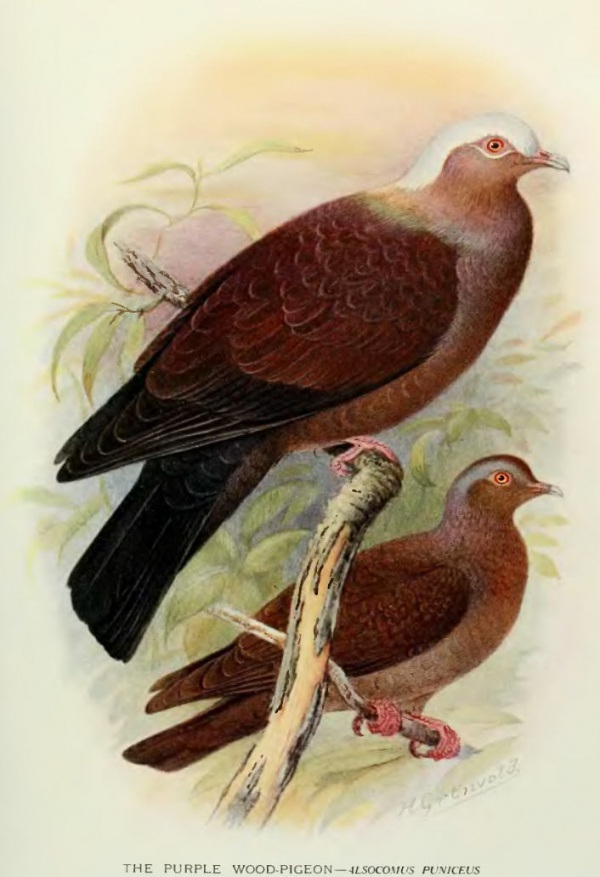Facts About Pale-capped pigeon
The pale-capped pigeon, also known as the purple wood pigeon, is a striking bird found in parts of the Indian Subcontinent and Southeast Asia. This large pigeon is often seen perched in tall fruiting trees within riverine forests and is characterized by a notably slow flight.
In terms of appearance, the male pale-capped pigeon exhibits a whitish-grey cap and purplish-maroon upperparts that glisten with a green or amethyst sheen. The female, in contrast, has a brownish-grey cap. Both sexes possess chestnut-brown bodies with pale crowns and display beautiful iridescent plumage. These pigeons measure between 36 and 40.5 cm in length.
The diet of the pale-capped pigeon consists primarily of fruits, but they also consume seeds and fallen fruit. These birds can be found in various habitats such as primary and secondary evergreen forests, deciduous forests, bamboo groves, and even agricultural fields adjacent to forests. While they are predominantly frugivorous, they do not shy away from seeds and grains.
Typically seen in small groups, especially during their foraging times in the morning and evening, they maintain a social yet somewhat dispersed presence. The breeding season for pale-capped pigeons spans from May to August. Their nests are usually placed low in trees and typically contain one or two eggs.
Interestingly, the pale-capped pigeon is known to be a host for a helminth parasite called Cotugnia joyeuxi. Although they were once common in several regions, recent observations suggest that their population may be in decline.

 Myanmar (Burma)
Myanmar (Burma)